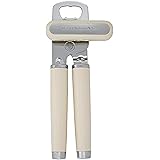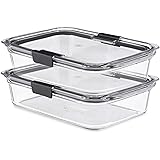What Is a Zero Clearance Fireplace? Benefits & Installation

Owala FreeSip Insulated Stainless Steel Water Bottle with Straw, BPA-Free Sports Water Bottle, Great for Travel, 24 Oz, Denim
$29.99 (as of November 11, 2025 19:14 GMT +00:00 - More infoProduct prices and availability are accurate as of the date/time indicated and are subject to change. Any price and availability information displayed on [relevant Amazon Site(s), as applicable] at the time of purchase will apply to the purchase of this product.)STANLEY Quencher H2.0 Tumbler with Handle and Straw 40 oz | Flowstate 3-Position Lid | Cup Holder Compatible for Travel | Insulated Stainless Steel Cup | BPA-Free | Plum
$26.55 (as of November 11, 2025 19:14 GMT +00:00 - More infoProduct prices and availability are accurate as of the date/time indicated and are subject to change. Any price and availability information displayed on [relevant Amazon Site(s), as applicable] at the time of purchase will apply to the purchase of this product.)Rubbermaid Brilliance Food Storage Containers BPA Free Airtight Lids Ideal for Lunch Meal Prep & Leftovers Set of 5 (3.2 Cup)
$27.99 (as of November 11, 2025 19:14 GMT +00:00 - More infoProduct prices and availability are accurate as of the date/time indicated and are subject to change. Any price and availability information displayed on [relevant Amazon Site(s), as applicable] at the time of purchase will apply to the purchase of this product.)Etekcity Food Kitchen Scale, Digital Grams and Ounces for Weight Loss, Baking, Cooking, Keto and Meal Prep, LCD Display, Medium, 304 Stainless Steel
$13.99 (as of November 11, 2025 19:14 GMT +00:00 - More infoProduct prices and availability are accurate as of the date/time indicated and are subject to change. Any price and availability information displayed on [relevant Amazon Site(s), as applicable] at the time of purchase will apply to the purchase of this product.)Alpha Grillers Meat Thermometer Digital - Instant Read Food Thermometer for Cooking and Grilling Stocking Stuffers for Men Christmas Gifts for Men
$13.58 (as of November 11, 2025 19:14 GMT +00:00 - More infoProduct prices and availability are accurate as of the date/time indicated and are subject to change. Any price and availability information displayed on [relevant Amazon Site(s), as applicable] at the time of purchase will apply to the purchase of this product.)Crock-Pot 7 Quart Oval Manual Slow Cooker, Stainless Steel (SCV700-S-BR), Versatile Cookware for Large Families or Entertaining
$47.99 (as of November 11, 2025 19:14 GMT +00:00 - More infoProduct prices and availability are accurate as of the date/time indicated and are subject to change. Any price and availability information displayed on [relevant Amazon Site(s), as applicable] at the time of purchase will apply to the purchase of this product.)KitchenAid Classic Multifunction Can Opener and Bottle Opener Easy to Use, Razor Sharp Stainless Steel Cutting Wheel, Soft Ergonomic Handles, Black
$14.35 (as of November 11, 2025 19:14 GMT +00:00 - More infoProduct prices and availability are accurate as of the date/time indicated and are subject to change. Any price and availability information displayed on [relevant Amazon Site(s), as applicable] at the time of purchase will apply to the purchase of this product.)Owala SmoothSip Slider Insulated Stainless Steel Coffee Tumbler, Reusable Iced Coffee Cup, Hot Coffee Travel Mug, BPA Free 12 oz, Vanilla Bean
$24.99 (as of November 11, 2025 19:14 GMT +00:00 - More infoProduct prices and availability are accurate as of the date/time indicated and are subject to change. Any price and availability information displayed on [relevant Amazon Site(s), as applicable] at the time of purchase will apply to the purchase of this product.)HydroJug Traveler - 32 oz Water Bottle with Handle & Flip Straw - Fits in Cup Holder, Leak Resistant Tumbler-Reusable Insulated Stainless Steel & Rubber Base - Gifts for Women & Men, Pink Sand
$34.99 (as of November 11, 2025 19:14 GMT +00:00 - More infoProduct prices and availability are accurate as of the date/time indicated and are subject to change. Any price and availability information displayed on [relevant Amazon Site(s), as applicable] at the time of purchase will apply to the purchase of this product.)ThermoPro TP19H Digital Meat Thermometer for Cooking with Ambidextrous Backlit and Motion Sensing Kitchen Cooking Food Thermometer for BBQ Grill Smoker Oil Fry Candy Instant Read Thermometer
$14.99 (as of November 11, 2025 19:14 GMT +00:00 - More infoProduct prices and availability are accurate as of the date/time indicated and are subject to change. Any price and availability information displayed on [relevant Amazon Site(s), as applicable] at the time of purchase will apply to the purchase of this product.)Introduction: Revolutionizing Modern Home Heating
For generations, the dream of having a fireplace was often dampened by the daunting requirements of heavy masonry, extensive construction, and a foundation capable of supporting a traditional hearth. Today, that dream is more accessible than ever, thanks to innovative heating solutions that blend tradition with modern technology. Among these, the zero clearance fireplace stands out as a revolutionary option for homeowners.
If you’ve ever wondered how it’s possible to safely install a fireplace directly against wooden studs or drywall, you’re asking the right question. What is a zero clearance fireplace? Simply put, it’s a pre-manufactured, self-contained heating unit engineered with advanced insulation to be installed in close proximity—or at “zero clearance”—to combustible materials like wood framing, walls, and paneling without posing a fire hazard .
This comprehensive guide will demystify these versatile units. We will explore their unique construction, compare them to traditional masonry fireplaces, break down the different fuel types available, and outline their significant benefits. Whether you’re building a new home or looking to add warmth and ambiance to an existing space, this article will provide you with the essential knowledge to understand why zero clearance fireplaces have become a preferred choice for modern living.
Section 1: Understanding Zero Clearance Technology
The term “zero clearance” can be misleading, as it doesn’t mean there is absolutely no space required. Instead, it refers to the fact that these fireplaces are designed and tested to be installed with minimal clearance between the unit’s outer shell and the combustible materials of your home’s structure, such as wood studs, drywall, and flooring . This is a radical departure from traditional fireplaces, which require significant non-combustible buffer zones.
The Engineering Behind the Safety
The secret to a zero clearance fireplace’s safety lies in its sophisticated multi-layer construction. While a traditional masonry fireplace is built on-site from brick or stone, a zero clearance unit is a factory-built system engineered for maximum insulation.
- Insulated Firebox: The interior firebox is typically constructed from heavy-gauge steel and is surrounded by thick layers of high-temperature insulation, such as ceramic wool or mineral board . This creates a “fire-within-a-fire” effect, where the interior can reach extremely high temperatures while the outer shell remains safe to touch.
- Air Circulation Systems: Many models feature built-in air channels or “cool air blowers” that circulate air around the firebox. This process actively draws heat away from the outer shell and redirects it into the room, further cooling the exterior while simultaneously improving heating efficiency .
This intelligent design ensures that however hot the firebox gets internally, the outside of the unit remains cool enough to be placed safely against standard wall framing .
Section 2: Zero Clearance vs. Masonry Fireplaces: A Head-to-Head Comparison

Understanding the key differences between zero clearance and traditional masonry fireplaces is crucial for making an informed decision. The following table outlines the core distinctions.
Table: Zero Clearance Fireplace vs. Traditional Masonry Fireplace
Section 3: Types of Zero Clearance Fireplaces by Fuel Source
Zero clearance fireplaces are available in several fuel types, each offering distinct advantages in terms of ambiance, convenience, and operational cost.
1. Gas Zero Clearance Fireplaces
Gas models are among the most popular choices due to their exceptional convenience and clean operation .
- How They Work: Most operate as direct-vent units. They use a sealed combustion system with a coaxial pipe: one pipe draws fresh air from outside for burning, while the other expels exhaust gases. This sealed system makes them highly efficient and safe for indoor air quality .
- Best For: Homeowners seeking push-button convenience, high heat output, and a clean-burning option.
2. Wood-Burning Zero Clearance Fireplaces
For those who desire the authentic crackle, scent, and sight of a real wood fire, modern wood-burning zero clearance units offer a surprisingly efficient alternative to traditional hearths .
- How They Work: These are advanced, EPA-certified appliances that use sophisticated combustion technology to burn wood more completely. This results in more heat from less wood and significantly reduced emissions . They do require a Class A chimney pipe system for venting .
- Best For: Purists who want the most authentic experience and don’t mind the work of hauling and storing firewood.
3. Electric Zero Clearance Fireplaces
Electric inserts offer the ultimate in installation flexibility and ease of use .
- How They Work: These units use LED technology to simulate flames and an electric heating element to produce warmth. Their biggest advantage is that they require no venting whatsoever, meaning they can be installed literally anywhere there’s an electrical outlet .
- Best For: Apartments, homes without venting options, or anyone who wants ambiance with the option of supplemental heat.
4. Pellet-Burning Zero Clearance Fireplaces
Pellet stoves offer an eco-friendly, automated heating experience .
- How They Work: They burn compressed wood or biomass pellets that are automatically fed from a hopper into the burn pot by an auger system. This allows for steady, thermostat-controlled heat.
- Best For: Environmentally conscious homeowners seeking automated fuel feeding and high efficiency.
Section 4: The Multifaceted Benefits of Choosing a Zero Clearance Fireplace
The advantages of opting for a zero clearance fireplace extend far beyond their flexible installation.
Unmatched Installation Flexibility and Cost-Effectiveness
The most significant benefit is the ability to add a fireplace to almost any home, regardless of its age or construction . Whether you live in a century-old home without a chimney or a newly built condo, a zero clearance fireplace can make a fireplace possible. This flexibility also translates into major cost savings, as the installation avoids the high expenses of masonry labor and materials .
Superior Energy Efficiency and Heating Performance
Traditional masonry fireplaces are notoriously inefficient, with as much as 90% of their heat escaping up the chimney . In contrast, zero clearance models are engineered for performance. With efficiency ratings that can reach 70% or higher for wood-burning models and even higher for gas units, they are designed to be a genuine source of zone heating, potentially reducing your reliance on central heating and lowering energy bills .
Enhanced Safety Features
Designed with modern safety standards in mind, these fireplaces feature enclosed fireboxes, sealed glass doors, and automatic shut-off capabilities (on gas and electric models). The insulated construction ensures the surrounding walls and floors remain safe from extreme heat, providing peace of mind .
Modern Aesthetics and Customization
While the firebox itself is a basic unit, this provides a blank canvas for customization. Homeowners can choose from a vast array of surrounds, mantels, and finishes—from sleek modern tiles to classic stonework—to create a fireplace that perfectly matches their home’s décor .
Section 5: Key Considerations Before Installation
While the benefits are substantial, there are important factors to consider before purchasing a zero clearance fireplace.
Professional Installation is Non-Negotiable
Despite being easier to install than a masonry fireplace, a zero clearance unit must be installed by a certified professional. Proper installation is critical for safety and performance. This includes ensuring correct clearances (even if minimal), proper venting, and secure connections to gas or electrical lines .
Understanding Venting Requirements
The venting needs vary by fuel type and must be planned for :
- Wood-Burning: Require a specific, insulated Class A chimney pipe that runs through the roof .
- Gas Direct-Vent: Use a coaxial pipe that can often be vented directly through an exterior wall, offering more flexibility .
- Electric: Require no venting, making them the simplest to place.
The Importance of Aesthetic Finishing
Be prepared for the additional step of finishing the unit. The basic metal firebox will need to be framed out with a custom surround, mantel, and facing to achieve the desired look, which is an additional cost and design decision to factor into your project .
Conclusion: Is a Zero Clearance Fireplace Right for You?
So, what is a zero clearance fireplace? It is a modern, efficient, and versatile heating solution that has democratized the dream of owning a fireplace. By combining advanced insulation technology with flexible installation options, it allows homeowners to add the warmth and ambiance of a fire to spaces where a traditional masonry fireplace would be impossible or prohibitively expensive.
If your priorities include a cost-effective installation, high heating efficiency, and the flexibility to place a fireplace in the room of your choice, then a zero clearance fireplace is an excellent option to consider. By consulting with a qualified hearth professional, you can select the right model and fuel type to create a beautiful, safe, and efficient centerpiece for your home for years to come.























